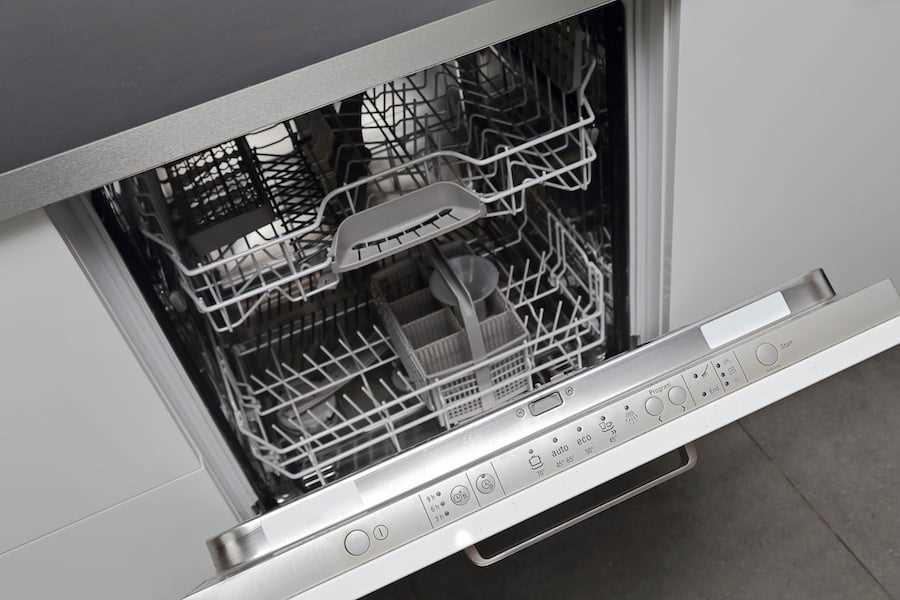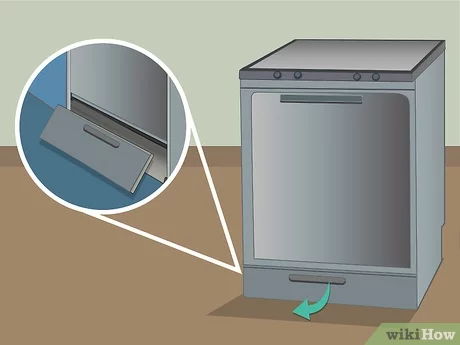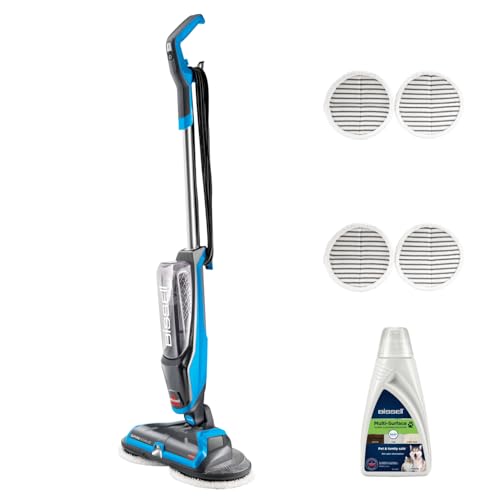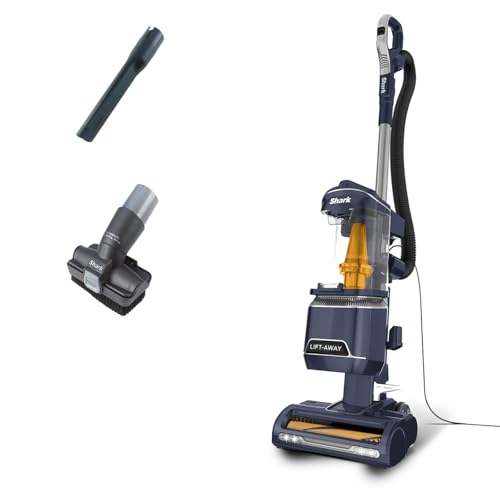




Dealing with a leaky dishwasher can be frustrating, especially if you’re not familiar with the tech behind it. A broken dishwasher can disrupt your daily routine, and regular maintenance is needed to extend its lifespan. If you’re tired of searching the internet for articles on how to fix your leaky dishwasher, you’ve come to the right place!
In this article, we’ll provide you with 9 DIY solutions to help you identify and fix the cause of your dishwasher leak. Whether it’s a clogged spray arm, a drainage problem, or a defective gasket, we’ll guide you through the steps to diagnose and repair the issue. And if all else fails, we’ll show you how to cancel the repair and call in a professional.
Step 1: Check the Door Seal
Start by inspecting the door seal, also known as a gasket. Over time, this rubber seal can become damaged or loose, allowing water to escape. If you notice any signs of wear or a gap in the seal, it’s time to replace it. A watertight door seal ensures that water stays inside the machine where it belongs.
Step 2: Clear the Drainage System
A clogged drainage system is a major cause of dishwasher leaks. To clear it, remove any food bits or debris from the drainage area. Check the drain hose and the sink inlet for blockages as well. If necessary, use a plumber’s snake to clear any stubborn clogs.
Step 3: Tighten or Replace the Spray Arm
If the spray arm is loose or damaged, it can cause water to spray outside the machine. Ensure that it’s properly tightened and secure. If the spray arm is cracked or broken, it will need to be replaced.
Step 4: Inspect the Float Switch
The float switch is responsible for monitoring the water level in the dishwasher. If it’s defective, it can lead to overfilled or flooded conditions. Check the float switch for any signs of damage or malfunction and replace it if necessary.
Top RatedDishwasher Bottom Door Seal for BoschPremium rubber seal with grey capsThis lower door seal fits Bosch dishwashers, ensuring an effective seal to prevent leaks. Made from durable rubber, it is designed for easy installation and long-lasting performance.
Step 5: Clean the Inlet Valve
A clogged or malfunctioning inlet valve can cause water to leak from the dishwasher. Remove the valve and clean it thoroughly to ensure proper water flow.
Step 6: Identify and Repair Minor Leaks
Inspect the dishwasher for any minor leaks. Look for signs of water around the machine or under the sink. If you identify a leak, determine the cause and repair it accordingly. Common causes of minor leaks include loose connections, damaged hoses, or worn-out fittings.
Step 7: Maintain Proper Machine Loading
Overloading the dishwasher can cause water to spill out during the wash cycle. Make sure to load the dishes properly and avoid overcrowding the machine. This simple step can help prevent leaks and ensure a clean wash.
Step 8: Use Vinegar and Baking Soda
If you’re still experiencing leaks, try using a mixture of vinegar and baking soda to clean the dishwasher. This DIY solution can help remove any built-up residue or debris that may be causing the leak.
Step 9: Seek Professional Help
If all else fails and you’re unable to diagnose or repair the leak yourself, it’s time to call in a professional. They have the expertise and tools to identify the root cause of the leak and provide you with the necessary repairs.
Hot PickLeakage Detection Tape for Water SafetyReliable tape for detecting leaksThis durable detection tape monitors water leaks, perfect for tight spaces like under sinks or dishwashers. It's easy to install and provides peace of mind in preventing water damage.
By following these 9 DIY solutions, you can identify, troubleshoot, and fix the cause of your dishwasher leak. Remember to regularly maintain your dishwasher to prevent future issues. And if your dishwasher isn’t fixable, don’t worry – there are always new and improved models on the market that can take care of your dishwashing needs. So why wait? Get your dishwasher fixed now!
DIY Solutions to Why Is My Dishwasher Leaking
If you recently noticed that your dishwasher is leaking, it’s important to address the issue quickly to prevent any further damage to your appliances and your home. A leaking dishwasher can lead to water damage, mold growth, and expensive repairs. Here are some DIY solutions to identify and fix the problem:
1. Check the connections:
Make sure all the connections, such as the water supply and drainage hoses, are properly attached and tightened. Loose connections can cause leaks.
2. Examine the valve:
Inspect the water inlet valve for any signs of damage or cracks. If you find any issues, the valve may need to be replaced.
3. Clean the spray arm and drain system:
Blocked or clogged spray arms and drain systems can cause water to leak from the dishwasher. Remove any buildup or debris and ensure that these components are functioning correctly.
4. Test the door seal:
Check the rubber door seal for any tears or damage. A faulty door seal can allow water to leak out during the dishwashing cycle. Replace the seal if necessary.
5. Inspect the float switch:
The float switch is responsible for regulating the water level in your dishwasher. If it’s stuck or malfunctioning, it can cause leaks. Clean or replace the float switch as needed.
6. Look for damaged drain hoses:
Inspect the drain hoses for any holes or cracks. If you find any damage, replace the hoses to prevent leaks.
7. Maintain your dishwasher regularly:

To prevent future leaks, ensure that you maintain your dishwasher regularly. Clean the filters, check for any signs of wear or damage, and follow the manufacturer’s instructions for proper usage.
By following these DIY solutions, you can identify and solve the causes of your dishwasher leaking. If the issue persists or you’re unsure about performing the repair yourself, it’s always recommended to seek professional help.
Check the Door Seal
If you notice water pooling around your dishwasher after a cycle, one of the first things you should examine is the door seal. A leaky door seal is a common cause of dishwasher leaks. In this section, we will go through the steps to check the door seal and identify any issues.
- Start with a Visual Inspection: Examine the door seal for any visible signs of damage or wear. Look for bits of food or other debris that may be blocking the seal.
- Clean the Door Seal: Use a damp cloth or sponge to clean the seal thoroughly. This will ensure that it forms a tight seal when the dishwasher door is closed.
- Check the Door Alignment: If the door doesn’t close properly, it may be due to loose hinges or faulty door latches. Make sure the door is aligned correctly and tighten any loose connections.
- Inspect the Gaskets: The dishwasher may have multiple gaskets around the door and other areas. Check these gaskets for signs of wear or damage. If any are worn-out or torn, they may need to be replaced.
- Consult the Manufacturer’s Manual: If you’re unsure about how to inspect or replace the door seal, consult the dishwasher’s manual. It will provide specific instructions for your make and model.
- Consider Replacing the Door Seal: If you find a faulty or worn-out door seal, it’s recommended to replace it. You can find replacement door seals at appliance stores or online.
- Perform Regular Maintenance: To prevent future leaks, it’s important to maintain your dishwasher regularly. Clean the door seal and other components of the dishwasher as part of your routine maintenance.
- Leave Complex Repairs to the Professionals: If you’re not comfortable performing repairs yourself, or if you’ve followed the steps above and the leak persists, it’s best to consult a professional dishwasher repair technician.
Checking the door seal is a simple and effective way to troubleshoot dishwasher leaks. By following these steps, you can identify and fix many common issues related to the door seal. If you have any questions or need further assistance, feel free to leave a comment on our website or reply to this article. Our team of tech experts will be happy to reply and provide further guidance.
Inspect the Dishwasher Tub
If you are dealing with a leaking dishwasher, one of the first steps you should take is to inspect the dishwasher tub. The tub is the main component of the dishwasher that holds the water and dishes during the cleaning cycle. Any damage or wear to the tub can cause leaks, which can be frustrating when you’re trying to get your dishes clean.
Diagnose the Problem
To determine if the tub is the cause of the leaks, you can perform a simple inspection. Start by checking the rubber gasket around the door of the dishwasher. Look for any visible signs of damage or wear, such as cracks or holes. If you notice any issues with the gasket, it may need to be replaced.
Next, check the inside of the tub for any damage or wear. Look for cracks or holes, as these can also cause leaks. If you identify any problems with the tub, you may need to have it repaired or replaced.
Tips for Fixing Leaks in the Dishwasher Tub
If you find that the tub is causing the leaks, there are a few solutions you can try to fix the problem:
- Check the drain valve: Make sure the drain valve is closing properly. If it is loose or faulty, water can leak out of the tub. Replacing the drain valve can help resolve this issue.
- Inspect the float switch: The float switch is responsible for controlling the water level inside the dishwasher. If it isn’t functioning correctly, the dishwasher may overfill and cause leaks. Replacing the float switch may be necessary.
- Clear clogged holes: Sometimes, the spray arm or detergent pod can become stuck, blocking the water flow. Check for any obstructions and clear them to ensure proper drainage.
- Check the inlet valve: If the inlet valve is damaged or worn, it may not be closing properly and can cause water to leak. Replacing the inlet valve can help prevent leaks.
Conclusion

Inspecting the dishwasher tub is an important step in diagnosing and fixing dishwasher leaks. By checking the rubber gasket, the tub itself, and other components like the drain valve and float switch, you can identify the cause of the leaks and take the necessary steps to correct them. Regularly maintaining and inspecting your dishwasher can help prevent leaks and ensure that your appliance is working correctly.
Check the Water Supply Line
If your dishwasher is leaking, one possible reason could be a problem with the water supply line. The water supply line is responsible for bringing water into the dishwasher, and if it’s blocked or damaged, it can cause leakage.
Here are 8 tips to help you diagnose and solve water supply line issues:
- Examine the connections: Start by inspecting the connections between the water supply line and the appliance. Check for any loose or damaged connections that may be causing the leakage.
- Inspect the water inlet valve: The water inlet valve controls the water flow into the dishwasher. Make sure it is clean and functioning properly. If it’s worn or damaged, it may need to be replaced.
- Regularly clean the water supply line: Over time, the water supply line can get clogged or blocked, preventing proper water flow. Regularly cleaning the line can help prevent leakage.
- Check the water level: If the water level in the dishwasher is too high, it can cause overflow and leakage. Adjust the water level switch to the correct setting to avoid this problem.
- Look for leaking hoses: Inspect the hoses connected to the water supply line for any leaks or damage. If you find any, they should be replaced.
- Consult a professional: If you’re unsure about how to diagnose or fix the issue with the water supply line, it’s best to consult a professional for help. They can identify the exact reason for the leakage and provide the necessary solutions.
- Prevention through regular maintenance: To avoid future leaks, make sure to regularly inspect and clean the water supply line and its connections. This will help ensure that everything is in proper working order.
- Switch to the correct dishwasher soap: Using incorrect or excessive amounts of dishwashing soap can cause excessive sudsing, leading to leaks. Use the right soap and follow the manufacturer’s instructions.
In conclusion, checking the water supply line is an important step in diagnosing and fixing a leaking dishwasher. By following these tips and regularly maintaining your dishwasher, you can avoid common leakage issues and keep your appliances in good condition.
Feel free to leave a comment below if you have any questions or if you found these tips helpful!
Clean the Drain Filter
If you have recently noticed that your dishwasher is leaking, one of the possible causes could be a clogged drain filter. The drain filter is responsible for catching food debris and preventing it from clogging the drain. Over time, this filter can get dirty and cause water to overflow and leak out of the dishwasher.
To clean the drain filter, follow these steps:
- First, make sure the dishwasher is not running or connected to power. Safety first!
- Locate the drain filter. Depending on your dishwasher model, it can be found at the bottom of the dishwasher or inside the dishwasher near the back.
- Remove the dishwasher’s bottom rack to access the drain filter.
- Inspect the drain filter for any signs of damage or blockage. Clean away any food debris, grease, or other buildup that may be present.
- Use a mixture of warm water and dish soap to thoroughly clean the filter. Scrub it gently using a soft brush or sponge.
- Rinse the filter with clean water to remove any soap residue.
- Once the filter is clean, reassemble it back into the dishwasher.
- Finally, test the dishwasher by running a short cycle to ensure that the leak has been fixed.
Cleaning the drain filter is a simple DIY solution that can solve a leaky dishwasher problem. However, if the issue persists or if you are not confident in fixing the problem yourself, it is recommended to schedule a service call with a professional technician. They will be able to diagnose and fix any major faults that may be causing the leakage.
Remember, regular maintenance and cleaning of your dishwasher can help prolong its lifespan and ensure it stays in working condition. Check the manufacturer’s website or consult the dishwasher’s manual for more specific tips on how to clean and maintain your dishwasher.
Unblock the Dishwasher Drain
If you’re experiencing leaks with your dishwasher, one of the potential causes could be a blocked dishwasher drain. A blocked drain can prevent water from properly draining out of the dishwasher, causing it to leak. Here are some steps you can take to unblock the dishwasher drain and fix the issue:
1. Start by inspecting the drain hose
- Disconnect the dishwasher from the power source
- Locate the drain hose, which is usually connected to the sink or garbage disposal
- Check for any kinks, twists, or clogs in the hose
- Tighten any loose connections or replace the hose if necessary
2. Check the dishwasher’s air gap

- The air gap is usually located on the sink countertop or the back of the dishwasher
- Clean the air gap to remove any debris or clogs that may be causing the blockage
- Make sure the air gap is installed correctly and there is a gap between the rubber gasket and the bottom of the air gap
3. Inspect the dishwasher’s inlet valve
- Turn off the water supply to the dishwasher
- Remove the access panel at the bottom of the dishwasher
- Check the inlet valve for any signs of wear or damage
- If the valve is defective, it may be causing the leaks and should be replaced or repaired
4. Clean the dishwasher spray arms and door gasket
- Remove the dishwasher’s spray arms
- Clean them thoroughly to remove any built-up soap scum or food particles
- Inspect the door gasket for any signs of wear or damage
- If the gasket is worn-out or damaged, it may be causing leaks and should be replaced
5. Consult a professional
If you’re unable to identify the cause of the dishwasher leaks or if the issues are related to the internal components of the dishwasher, it’s best to consult a professional. They will be able to diagnose and solve the problem effectively.
In conclusion, if you’re experiencing leaks with your dishwasher, it’s important to start by inspecting the drain hose, checking the air gap, inspecting the inlet valve, and cleaning the spray arms and door gasket. If you’re unable to fix the problem yourself, consult a professional to prevent further damage and ensure the lifespan of your dishwasher.
If you have any comments or questions about this article, please leave a comment below.
FAQ
Why is my dishwasher leaking?
There are several reasons why your dishwasher may be leaking. It could be due to a faulty door seal, a worn-out pump assembly, a clogged drain hose, or a cracked tub. It is important to identify the source of the leak before attempting any repairs.
How can I fix a leaking dishwasher?
Fixing a leaking dishwasher will depend on the cause of the leak. If the door seal is damaged, it may need to be replaced. If the pump assembly is worn-out, it may need to be repaired or replaced. If the drain hose is clogged, it can be cleaned out to resolve the leak. If the tub is cracked, it may need to be sealed or replaced.
How can I test the water inlet valve in my dishwasher?
To test the water inlet valve in your dishwasher, you can use a multimeter. First, disconnect the dishwasher from the power supply. Then, locate the water inlet valve and disconnect the wires. Set the multimeter to the ohms setting and place the probes on the terminals of the water inlet valve. If the multimeter shows a reading of infinity, the valve is likely faulty and needs to be replaced.
What should I do if the water inlet valve in my dishwasher is faulty?
If the water inlet valve in your dishwasher is faulty, it will need to be replaced. You can purchase a new water inlet valve from an appliance parts store or order one online. Before replacing the valve, make sure to disconnect the dishwasher from the power supply and turn off the water supply. Install the new valve according to the manufacturer’s instructions and reconnect the wires. Finally, turn on the water supply and test the dishwasher for any leaks.














